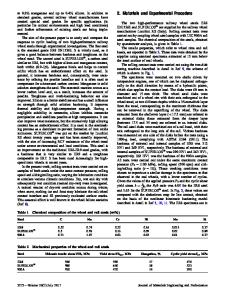Contact fatigue of silicon
- PDF / 1,076,489 Bytes
- 10 Pages / 585 x 783 pts Page_size
- 89 Downloads / 315 Views
Juan José Meléndez-Martínez Departamento de Física, Universidad de Extremadura, 06071 Badajoz, Spain
Brian R. Lawna) Materials Science and Engineering Laboratory, National Institute of Standards and Technology, Gaithersburg, Maryland 20899-8520 (Received 20 November 2007; accepted 22 January 2008)
Macroscopic cracks in bulk silicon are generally considered to be immune to fatigue. Here, evidence for pronounced fracture-related fatigue damage in cyclic contact loading of (001) monocrystalline silicon with hard spheres of millimeter-scale radius is presented. The periodic indentation field generates ring cracks around the contact, which proliferate with continued cycling. Copious debris in the form of slabs and particulates is ejected from within the crack walls onto the specimen surface. Continued ejection leads ultimately to large-scale surface removal. The fatigue damage progressively degrades the material strength, more rapidly at higher contact load. Implications concerning the function of silicon devices, including microelectro-mechanical systems, will be briefly discussed. I. INTRODUCTION
Silicon remains the material of choice in the semiconductor industry, largely because of its unique electronic properties. Less well studied are its mechanical properties, despite the important role of such properties in the assessment of device reliability. Silicon is highly brittle. Surface flaws and defects are easily generated by the slightest microcontacts, making this material susceptible to severe strength degradation during function.1–9 Conventional fracture tests on specimens of silicon monocrystals containing tensile-loaded plane cracks have established that silicon has a toughness
Data Loading...





